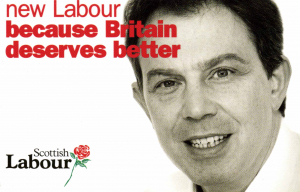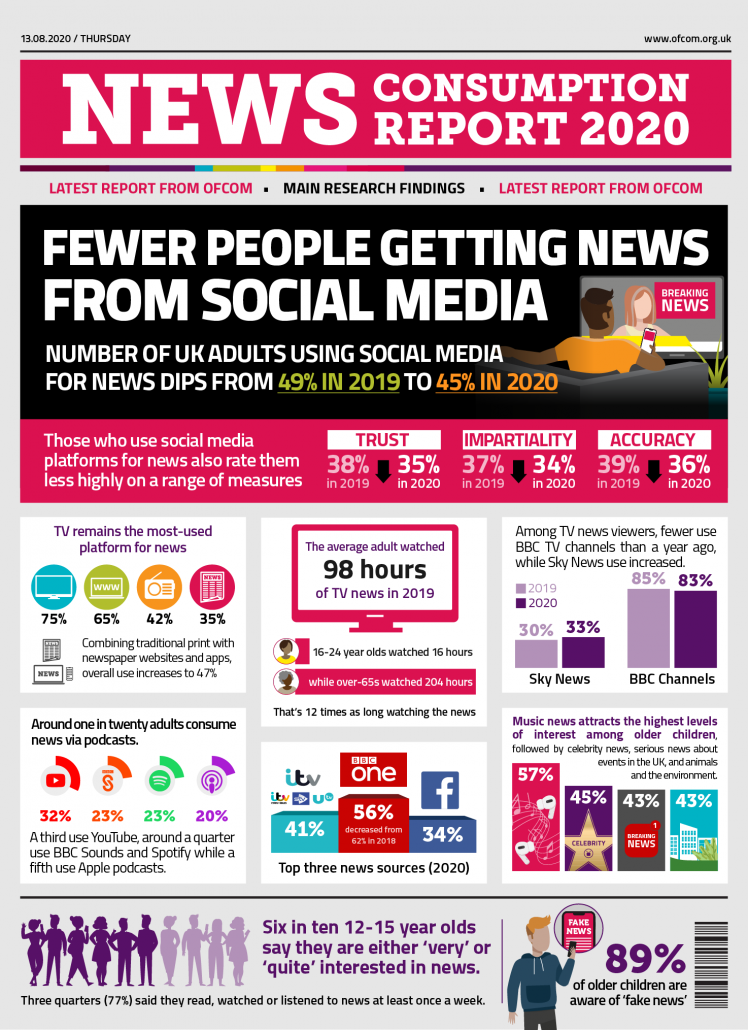Investigating How PR Helped Labour To A Landslide Win 25 Years Ago
Believe it or not, it is possible to see exactly where ‘Cool Britannia’ reached its high watermark.
It wasn’t at the Trainspotting film premiere or the 1996 Brit Awards, it was in fact at Downing Street of all places.
Why? A transformed Labour Party had just swept to power with an historic election win under its, at the time, charismatic leader Tony Blair.
In the wake of this victory, the new Prime Minister held a drinks reception at Number 10, which saw him host the great and the good of British society.
A now infamous image of him shaking hands with Noel Gallagher emerged from the bash which came to symbolise the unlikely fusion of politics and culture that took place in the mid-1990s.
Between Tony Blair’s election as leader in 1994 and the eve of election three years later, Labour had manoeuvred themselves into a position where they had become inextricably linked to the burgeoning Cool Britannia movement and subsequently the party of hope.
The movement symbolised optimism, hope and new beginnings and was sound tracked by Britpop and characterised by a rare self-assuredness in British culture, highlighted by Trainspotting’s warning to Hollywood that ‘their time was up’.
So how did PR help Labour to victory?
Past PR Failures
It was no accident that Blair’s Labour found themselves at the heart of this.
Spearheaded by former journalist Alastair Campbell, the party employed a communications and PR strategy that centred on a consistent message of ‘newness’, positivity and the prospect of a ‘new dawn’ for the country.
However, having such a well-oiled media machine was a novelty for the party.
In the 1980s, Labour became synonymous with defeat, after losses in 1983 and 1987. Frankly it needed a brand overhaul.
During the eighties, the ‘Red Wedge’ movement, which saw figures such as Paul Weller promoting the party, seemed to be the perfect PR opportunity but ultimately it failed to translate to election success.
By 1992, however, election success was a real possibility after the Conservatives were deemed responsible for economic failures and Labour responded with the slogan ‘It’s Time for Labour’.
Despite party confidence, victory once again eluded them. This was, in part, down to a huge PR gaffe as reports emerged that a Party Election Broadcast about a sick little girl was fraudulent and this led to ethical questions in the media about the PEB, which damaged the party’s prospects.
The gaffe, known as ‘Jennifer’s Ear’, was a turning point in the election and cost them and the party’s incoherent public relations strategy was floundering in comparison to the Conservatives’ campaign.
With advertising giant Saatchi and Saatchi, the Conservative Party produced a series of slick and powerful billboards such as the famous boxing gloves image claiming a Labour government would bring in a ‘double whammy’ of higher prices on one hand and higher taxes on the other.
The Conservatives’ scare tactics warning against a Labour government worked well and many political commentators opine that the former’s victory was merely as a result of the electorate’s lack of trust in the latter.
Emphasising A ‘Newness’
From the 1994 election onwards, Blair and his team set about re-branding the party to distance themselves from the past election failures and showcase to the electorate that this was the party of the new century.
With Campbell onboard as a relatively unknown campaign director, Labour had a clear and strategic message which helped them to re-brand.
This was obvious from the outset as in Blair’s first party conference speech as leader, he included the slogan ‘new Labour, new Britain’.
‘New Labour’ would be central to how the party marketed itself and it has been claimed by Blair that it was Campbell who coined the name.
‘New’ was the key buzzword for Labour in their campaigning, highlighting themselves as a modernising force that was in sharp contrast to the Conservatives, who they framed as antiquated and out of touch.
This strategy was key to how they would cast themselves alongside the Cool Britannia movement. In fact, they thrust themselves into the movement at the 1996 Brit Awards when Tony Blair presented the Outstanding Contribution award at that year’s ceremony.
Presenting this award was an opportunity that Blair took to position he and his party as relatable and a far cry from the culturally out-of-touch politics of old.
Cool Britannia symbolised a positivity in the light of the new millennium that was similarly exalted by Blair and his party who rode this wave perfectly.
By emphasising a ‘newness’, Labour were able to position themselves as synonymous with the cultural powerhouses of the time and seemed to offer hope to the electorate, while framing the Conservatives as the polar opposite.
With the D-Ream hit ‘Things Can Only Get Better’ sound tracking the party’s campaign, this newness and fresh-thinking made the public think that things really could only get better.
Getting The Message Across
Back in 1992, the tabloids had waged a war on Labour, denouncing them at every turn.
The Sun were the most vehement opponent of the party, producing infamous headlines such as ‘If Kinnock wins, will the last person to leave Britain turn out the lights?’.
However, in the five years that followed, the party had been able to woo journalists and courted moguls such as Rupert Murdoch into supporting New Labour.
This meant that having once been the denouncer of the party, Britain’s biggest newspapers The Sun and Murdoch’s other red-top The News of the World, were now ardent supporters of New Labour.
Not only did they have the press onside but as part of a new centralised comms organisation at Millbank Tower, New Labour’s message was a unified and well-oiled one, unlike days gone by when it could often be confused and fragmented.
These two factors combined helped the party to deliver key, coherent messages to the electorate about their competencies and deflect attention away from the Conservatives scare-mongering of the ‘new danger’ of New Labour.
Their campaign director Alastair Campbell, a former journalist himself, understood the mechanics of the media and he employed clever soundbites and, the now much maligned, spin to ensure that Labour’s message was clear and positive.
Using the media in such a way, along with centralising communications, meant that the party could communicate to the electorate that they could be trusted on issues such as the economy and crime, with their slogan ‘tough on crime, tough on the causes of crime’ proving effective.
It Was PR Wot Won It
While the famous Sun headline ‘It was the Sun wot won it’ celebrated a Conservative victory over Labour in 1992, the very same paper was celebrating the reverse result in ’97.
A huge part of Labour’s election win 25 years ago, was down to its ability to communicate and using the media to its advantage.
It also rode the wave of optimism and hope in Britain that was propelled by Britpop, Brit Art a burgeoning film scene and maybe even England’s success at Euro 96 and positioned itself front and centre of this.
This created the perfect electoral cocktail that was guzzled by a triumphant party just as, as they claimed, ‘a new dawn ha[d] broken’.
Featured image from Flickr: https://flickr.com/photos/axeley/2526998419/in/photolist-4RiwAg-2kWs6ka-MFQhcH-bs3QPm-7iTDku-bs3QEw-8Gkni8



